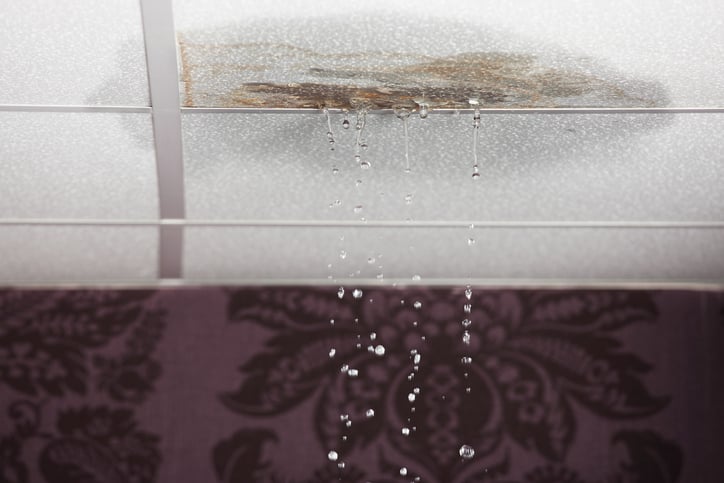Flood Damage Restoration After a Disaster: Being Ready
Chris Ranwell
Jun 15, 2022 8:52:23 AM

In the world of water and flood damage restoration, there’s no set schedule for when an event will occur or when a frantic homeowner or property manager needs an immediate emergency response inspection.
While there is an element of seasonality to some major flood events – such as those caused by hurricanes or the spring thaw – it’s almost impossible to predict exactly when one will occur. An old, corroded pipe doesn’t announce ahead of time that it plans to burst, nor does a washing machine schedule when one of its hoses will break.
In any event, being prepared to conduct a water damage inspection is something that every flood damage inspector can be ready for at a moment’s notice. Like a firefighter who has their gear ready to go, maintaining a stocked toolbox is key for responding efficiently and completing thorough flood damage inspection.
5 Essentials for Every Flood Damage Inspector’s Tool Kit
Responding to a call for a flood or water damage assessment at a moment’s notice means always being ready.
At a minimum, every flood damage restoration professional’s tool kit should include:
- Moisture meters
- Moisture meter accessories
- A Hygrometer
- A Thermal Imaging Camera
- A Laser Distance Meter
1. Moisture Meters
The most obvious tool needed for an inspection after a flooding event, a moisture meter’s readings are the foundation of a post-water damage assessment.
As the primary purpose of an inspection for moisture after a flood damage event is to determine the location and extent of water intrusion, it’s best to have both types of moisture meters on hand. Pinless meters (non-penetrating moisture meters) allow a surveyor to quickly pass through a space to identify areas of concern. A pin-type moisture meter is used later to further investigate the initial finding and confirm moisture presence.
Pro Tip: The last thing any professional wants is to use equipment that’s unreliable and inaccurate. Investing in a professional moisture meter made by a reputable moisture meter manufacturer ensures you’ll have a tool that’s ready when you are and dependable.
2. Moisture Meter Accessories
Sometimes using a moisture meter by itself during an inspection isn’t ideal. For instance, some testing areas may be out of reach or too small for the device to fit into. In other cases, getting readings may require taking measurements beyond surface level.
Regardless, your toolbox should have moisture meter accessories that make it easy to meet the demands of completing a thorough and accurate inspection, such as:
- Extension probes
- Baseboard probes
- Hammer electrodes
- Deep wall probes
Bonus Pro Tip: Looking to take consolidation a step further? Restoration moisture meter kits contain everything you’ll need – a water damage moisture meter and its accessories – for taking water damage moisture readings.
3. Hygrometer
Another type of meter, a hygrometer measures the ambient conditions of a space, giving readings for relative humidity, temperature, and grains-per-pound.
A hygrometer’s purpose in a moisture inspection is two-fold. First, it helps an inspector gauge in a broad sense if a space has excessive moisture that merits further investigation. Second, a hygrometer’s readings can help confirm if moisture remediation/ flood recovery work to a home or building is effective.
4. Thermal Imaging Camera
Another tool that helps locate moisture in a non-traditional way, a thermal imaging camera provides a unique perspective.
With a thermal imaging camera, an inspector is able to “see” moisture using a visual representation of temperature differences. Compared to nearby dry areas, material affected by moisture is typically cooler, appearing blue on the device’s display screen.
Similar to a hygrometer’s measurements, a thermal imaging camera’s readings are helpful in locating moisture presence during the first part of an inspection.
The Other Things a Tool Kit Should Include
A well-stocked toolkit goes beyond having equipment needed to take post-water damage event measurements. In addition to the above-mentioned tools, your toolbox should also include:
- Spare batteries for a backup power supply to your various digital moisture measuring devices
- A camera/smartphone for capturing images of areas affected by moisture
- PPE, including gloves, breathing masks, and goggles for protection from contact with health hazards
- Pens/pencils for recording readings and other notes the old-fashioned way
Being Ready for the Next Call
There’s no way to know exactly when a call for a post-flood or water damage inspection will come in. But with an adequately prepared toolkit that contains everything you’ll need for the job, you’ll waste little time getting to the job site and completing the inspection.
And remember: the sooner you’re able to respond to and complete a water damage inspection after a flooding event, the faster you’re able to move on to the next job.
Simplify Your “Go Bag”
Our Restoration Kit has everything you’ll need to take moisture readings after a flood or water damage event – including the MMS3!
